PET VS PETG, What’s the difference?
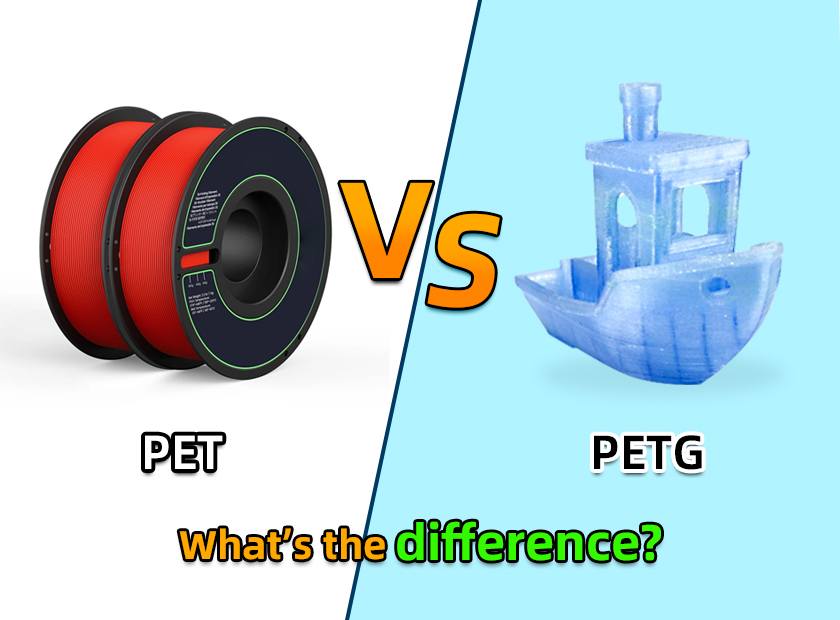
PET VS PETG, What’s the difference?
Prologue
If you're a 3D printing enthusiast, you may have come across PET and PETG filaments. While these two types of plastic may sound similar, they are actually quite different. PET VS PETG, what are their differences? In this blog, we'll delve into the details and highlight the key differences between PET and PETG so you can make an informed decision about which material to use for your next 3D printing project.
What are PET and PETG?
In the world of plastic, PETs, and PETGs are not new. These polymers are used in virtually every aspect of our lives. While it may seem obvious that water bottles, food containers, and soap dispensers are printed with PETs, automobile parts, electrical devices, and textiles also depend on PETs.
The lightweight, cheap plastic has taken the world by storm, and it doesn’t seem to be going anywhere soon. Due to its low cost and excellent properties, this popularity has also piqued 3D printing enthusiasts’ interest. As it's cheap, easily available, and easy to print, PETG is often the best choice on a budget for mid-range temperature and mechanical resistance.
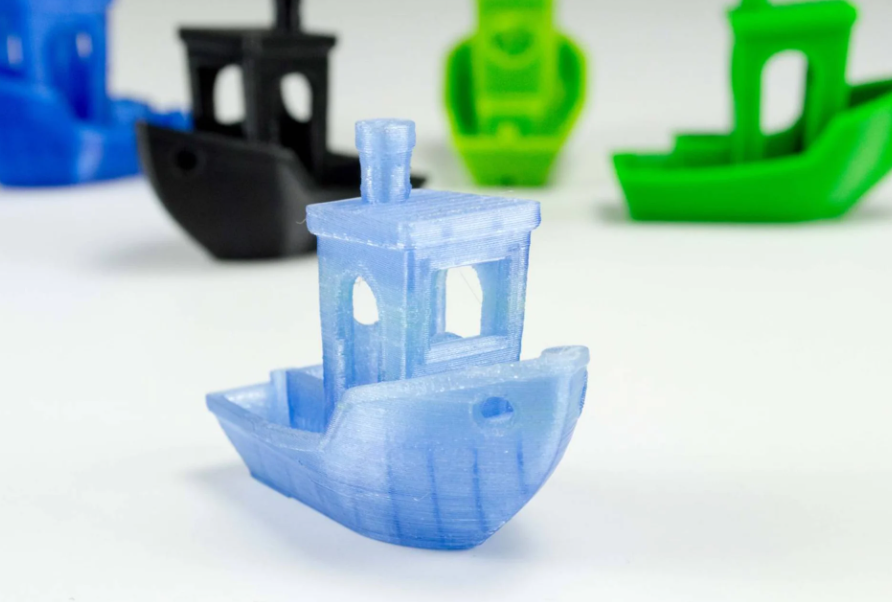
PETG 3D Printed Model
In contrast, PET is a relatively rarely used filament in 3D printing. Resources on PET's properties and print settings are few and conflicting, perhaps due to its difficulty to find. There is a misconception that PET does not have a -G, but it actually makes a huge difference when it comes to printability.
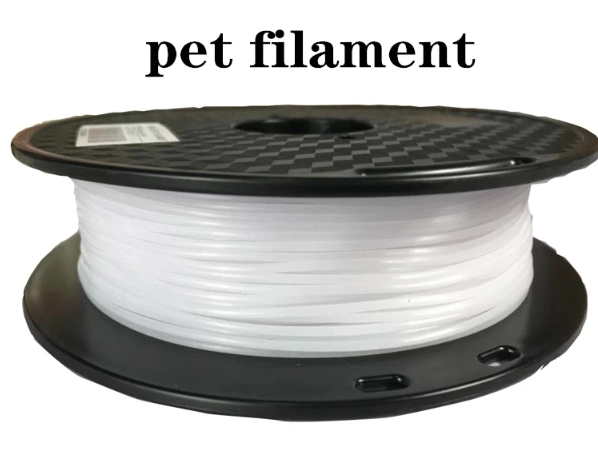
PET filament
The “G”
First, let's talk about some chemistry. In spite of the fact that glycol is indeed a common plastic additive with plasticizing effects, PETG is not quite the same as PET. There is a common misconception that the main difference between PETG and PET is the physical addition of a glycol additive.
What is Glycol
It might seem confusing at first, but "glycol" is actually a generic term for a class of structures with hydroxyl groups at both ends, so there are a number of different chemical structures that can all be referred to as glycols. The PET vs PETG debate revolves around the fact that not all glycols have the same properties.
Different Formula
Polyesters, such as PET and PETG, are made by combining acid monomers with glycol monomers. PET contains the acid DMT (dimethyl terephthalate) and the glycol ethylene glycol. As a result of these two monomers, polyethylene terephthalate is formed into a long-chain polymer.
PETG is produced with the same monomers as PET, with the exception that some ethylene glycol (30-60%) is substituted with CHDM (cyclohexanedimethanol) as a glycol monomer. Therefore, the -G in PETG represents the chemical modification of the typical PET structure with CHDM glycol units, or “glycol-modified”, so it doesn't have significantly more or less glycol than PET; it just has a different type of glycol.
After understanding the chemical differences between PET and PETG, what are their physical properties?
Material Properties
Essentially, this glycol modification transforms semi-crystalline PET into amorphous PETG. To understand why this is relevant to 3D printing, let's look at the importance of crystallinity in polymers.
Like a bowl of spaghetti, amorphous polymers have chains arranged randomly. Semi-crystalline polymers contain regions of crystallinity with highly-ordered and densely packed chains.
Mechanical Performance
A semicrystalline material is generally more rigid than a totally amorphous counterpart because crystals can serve as reinforcement. This is true for both semicrystalline PET and amorphous PETG. Although these two polymers have very similar mechanical properties, PETG has a little more stretch.
Thermal Performance
Semicrystalline materials are prone to warping when they cool because of changes in density caused by crystallization. Therefore, amorphous PETG is more suitable for 3D printing than semicrystalline PET. To prevent distortions, semicrystalline PET requires stricter printing and ambient temperatures.
Compared to PETG, PET requires a slightly higher operating temperature for printing due to its crystalline nature. However, PET has some advantages in that it's more durable in applications that require some thermal resistance, but it's also more difficult to print.
Appearance
Also, the PET and PETG 3D printing filaments look different, PETG filaments look shiny and even transparent for their amorphous purely random nature of polymer chains. PET, as a mixture of crystalline and non-crystalline regions, will have some cloudiness.
How to Print PET and PETG?
When it comes to extruding plastics, crystalline structures can present some challenges. PET, for example, is notoriously difficult to process because it tends to crystallize out of control, even if it's just a little too cool. To solve this problem, manufacturers often add special additives to inhibit the crystallization process, and it's critical to work under optimal conditions.
However, PETG, which is PET modified with glycol, has an amorphous structure that makes it much more manageable for extrusion, injection molding, and other thermoforming processes. This modification is the key to PETG's success because it allows for greater ease and flexibility in shaping the plastic to meet various manufacturing needs.
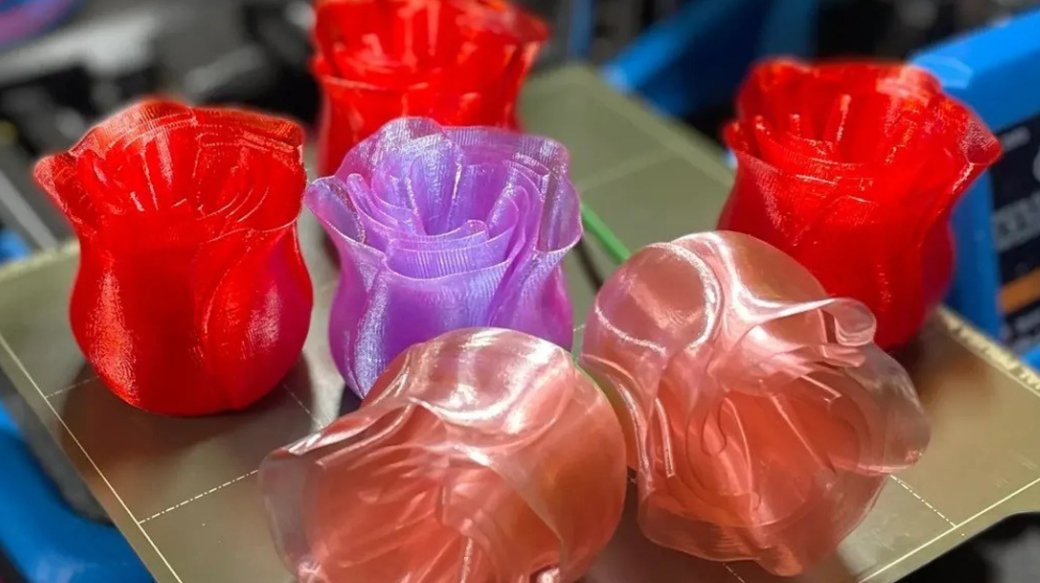
PETG 3D Printed Rose Model
The settings and parameters
In practice, there are a few differences between printing with PET and PETG filaments. However, many users report success using the same temperature parameters for both, although this may be due to similar anti-crystallization additives used by manufacturers.
Since PET and PETG filaments are typically grouped together, if you happen to have PET filament on hand, the following PETG parameters can serve as a helpful starting point for your printing experiments.
|
Hot end temperature |
230-260 °C |
|
Print bed |
80-90° C on a textured PEI sheet |
|
Fan speed |
0-50% |
|
Retraction |
Slow retraction speed and linear advance enabled |
|
First layers |
Slower and hotter to promote adhesion |
Risks of Printing
If you are having trouble printing with PET or PETG filaments, the first thing to check is the temperature settings. PET may require slightly higher hot-end temperatures than PETG, and using an enclosure can help maintain higher ambient temperatures.
The second issue to consider is hydroscopy, as PET has a higher tendency to absorb moisture than PETG. If you plan to work with PET, it's critical to have a filament dryer to prevent moisture from affecting your print quality.
Finally, extreme adhesion and surface damage can be a challenge when printing with PETG. To avoid this problem, consider applying a layer of water-soluble adhesive prior to printing. This can help improve bed adhesion and prevent damage to the printed surface.
About Price
Both PET and PETG filaments are affordable options for 3D printing. However, due to its ease of use, PETG is available in a wider range of colors and variations than PET. For example, amorphous PETG is required for clear filaments, while PET is typically used in applications where stiffness is critical.
Formfutura's EasyFil PET is a low-cost option for PET, with 12 color choices available at approximately $34 per kg. However, there are limited affordable PET options compared to PETG.
For more demanding applications, PET composite filaments are a better choice. BASF's Ultrafuse PET CF is a good option, offering improved mechanical performance and reduced warpage due to the inclusion of carbon fiber.
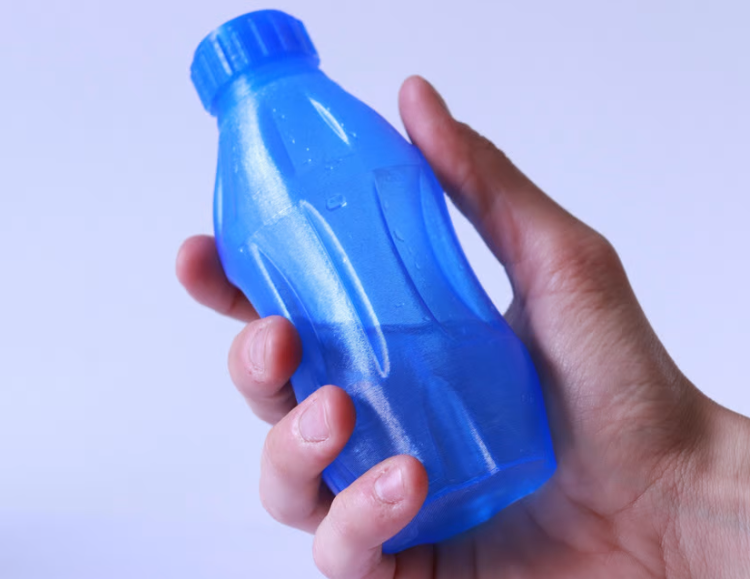
PETG Bottle with screwed bottle cap
However, PETG filaments offer a wider range of options. Matterhackers' MH Build Series is a reliable and budget-friendly option for PETG, starting at around $22/kg and offering over 30 colors. In addition, recycled PETG filaments are available, such as Formfutura's ReForm rPET, which is very affordable and offers users 11 color options.
Final Words
Knowing the chemical properties of different filaments is quite important for 3D printer users, it can help you better know which material to use for your future 3D printing projects. However, a home 3D printer can sometimes take up space, and some resin 3D printers have high prices that discourage users from continuing to use them. To solve these problems, makers can turn to professional 3D printing service providers like Elecrow. Elecrow offers professional 3D printing services and can fulfill any 3D printing need you may have, Elecrow is even launching a Partner Seller Program where makers can take their DIY 3D printing projects and other electronics projects into mass production and sell them online to make money!
If you want professional 3D printing services, Elecrow's expert 3D printing services is a great choice, if you have great ideas for 3D printing projects and want to seek for commercial purpose, join Elecrow's Partner Seller Program for more benefits!
